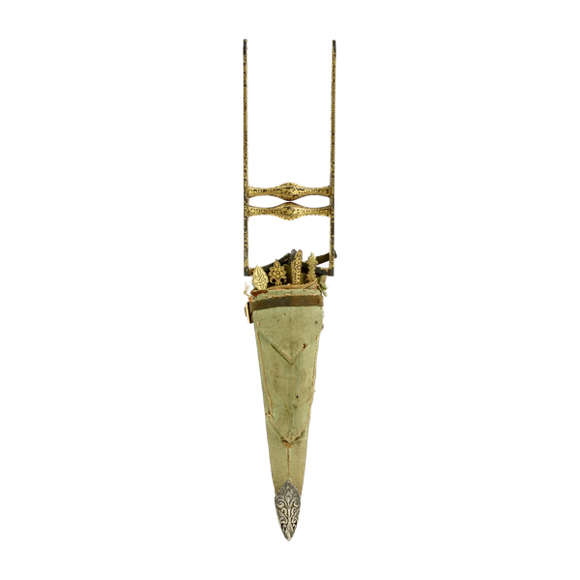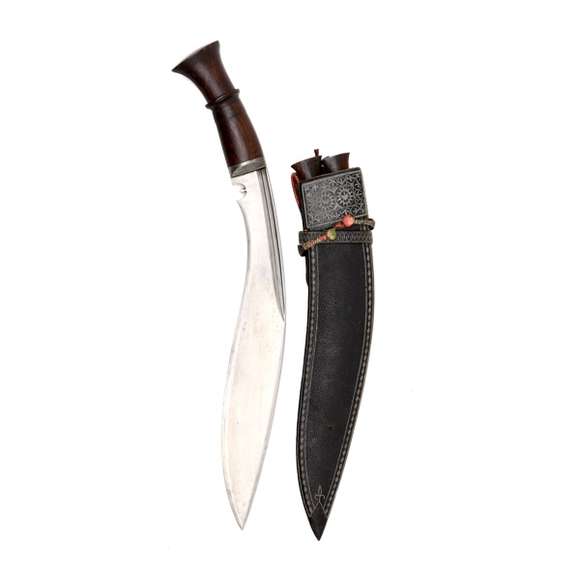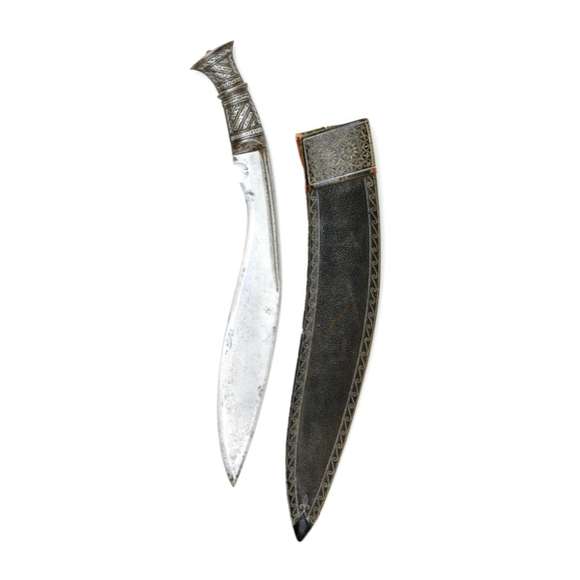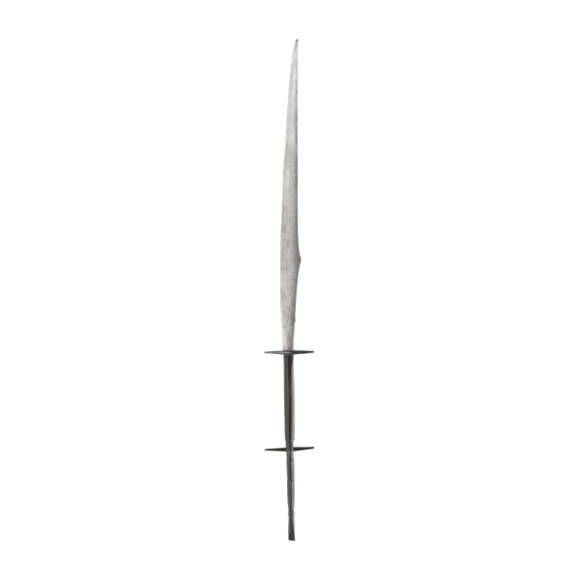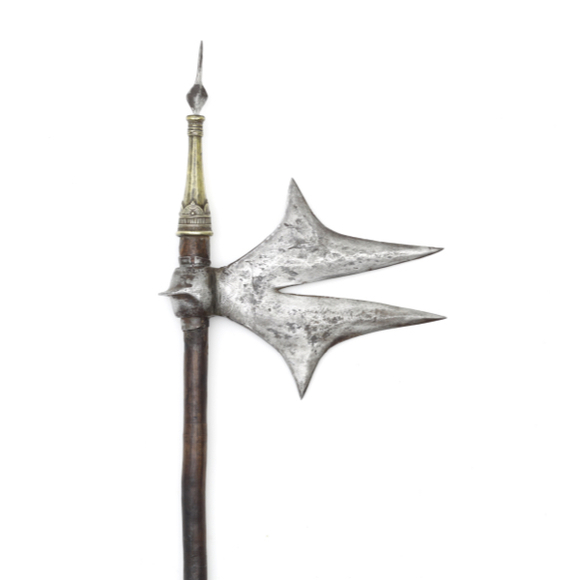With a fine wootz blade with a pronounced center ridge.

54.2 cm
26.1 cm
48 mm
at muzzle
1658 grams
Iron, steel, wood, gold, brass
Persia, Afghanistan, or North India
19th century
From a Scandinavian collection
Description
A charming old blunderbuss with a percussion lock. Such guns were known locally as sher bacha, literally "tiger cub". In 1760, about ten thousand troops of Ahmad Shah Abdali's army in Kabul were described as being armed with sher bacha.1
This gun must postdate that by some decades, as the percussion system only became widespread in the 1820s. By this time, the region was known as the Emirate of Afghanistan. It could, however, be later converted from an earlier flintlock, like many guns have been.
Baden Powell describes two types used in Amritsar in the Punjab: one "short and somewhat wide-mouthed piece" called karabin and the "short and trumpet shape barreled weapon" again as sher bacha.2
Two others mentioned by Egerton were made in Kashmir. See below under comparable examples.
Notes
1. Robert Elgood; The Maharaja of Jodhpur's Guns. Niyogi Books, New Delhi. 2020. Page 188.
2. Baden-Powell; Handbook of the manufactures and arts of the Punjab. Lahore, 1872. Page 285.
This example
It has a wooden stock of European style, with a small container for caps in the cheekpiece. The lock, in English style, is decorated with gold overlay.
The best thing about this charming little piece is the barrel, which was twist forged, using very narrow stacked rods that were twisted and welded until forming the entire barrel.
The barrel is most likely of Persian origin, although such fine twisted work is also seen on the renowned gun barrels made for the Talpur house of Sindh, which were made in Hyderabad in the late 18th to early 19th century.
The gun is of rather small size, which makes me think it may have been made for a child.
Origin
The barrel appears to be of Persian manufacture but Persian makers by that time were spread all over the region. The Sikh empire drew many to Lahore and some even settled into Rajasthan. The gold work does resemble more provincial work done in what is now Afghanistan and the Punjab region.
Comparable examples
The Victoria and Albert Museum has two flintlock blunderbusses made in Kashmir, accession numbers 2604(IS) and 2603(IS). They were originally published in Egerton's landmark work; An illustrated handbook of Indian arms. London, 1880 page 144. It said they were presented by H.H. the Maharajah Gulab Sing in 1855.
Their barrels are nearly identical to ours in profile and forging structure, but the stocks are different, suggesting, indeed, Persian import barrels and locally produced stocks in the European style.










An understated, elegant khukuri of substantial proportions with fine layered blade.
With iron, silver overlaid hilt. Its associated scabbard features fine quillwork.
These mysterious weapons were already obsolete when the first ethnographers encountered them.
This peculiar sword was used by the Garo people of Assam for fighting, clearing the jungle, and animal…

